Lately, I’ve been getting better about my scheduling and planning… and prioritizing. While I make sure that I fit in some stuff, I also know that some stuff is just not happening. If I’m not careful, that could include breakfast.
While there are many people out there who can skip breakfast and be just fine, I can’t. My mornings are far too high-octane for me to be out here unfed. I’m grouchy, I make angry threats, and I mumble curse words under my breath when I don’t get proper sustenance after a couple of hours.
There are lots of breakfasts that you can make ahead if you like – granola, anyone? – but what if you want more? What if you want to explore?
As always, Mama’s got you.
Frittatas are, to describe them super-simply, treated as egg pies without a crust. (If it had a crust, it’d effectively be a quiche. It’d also be far creamier, as quiches tend to be more like a baked custard-y pudding-y type situation.) You take a gang of eggs and blend ’em up, toss in a bunch of delicious flavorful ingredients as well as some of your favorite fresh and dried herbs, and you make delicious happen. Frittatas might look intimidating, but trust me – these things are super-easy. It’s very hard to mess this up. (But, if you do, let me know so that I can offer advice/modify my instructions!)
This works well for mornings, of course, because the right frittata can not only reheat well, but it can start your day off with the right kind of savory, as opposed to an unfulfilling kind of sweet. Whereas some people might struggle with avoiding sweets all day, one of the more major culprits can usually be spotted in what they had for breakfast – if you skip the oatmeal packets, the sugary juices and syrups, the melt-in-your-mouth sugary cereals all in favor of something savory, chances are much higher for you in skipping more sweets throughout the day. Couple that with the protein and fat in the eggs to keep you satisfied throughout the day, and you’re winning before you’ve even walked out the door.
I’m going to teach you how to play with frittatas through my own personal favorite – red peppers, zucchini, onion, basil, tomato, and chevre — otherwise referred to as goat cheese. I’m a goat cheese freak – sorry – mainly because I love the thick and creaminess of it. The taste is much like a blend between cream cheese and Greek yogurt, in the sense that it has that sharp bite to it, but the creamy consistency blends well with the veggies, here. In a pinch (or if goat cheese isn’t available where you are), cream cheese could possibly work fine here.
You’ll need everything in the photo above. A dozen-and-a-half large eggs, a healthy handful of fresh basil, one onion, one red pepper, one whole zucchini, one half of a tomato, and a 4oz log of goat cheese. I’m cooking this in a 10″ cast iron skillet which means that, for me, this will call for 16 whole eggs. If you use a different size and kind of skillet, give it a quick measure – if your skillet is smaller than 10″ and not at least 2″ deep, you might crack open 16 eggs and find that you only need 8, 10, or 12. If you open too many, no worry – store the unused eggs in the fridge in a sealed container. If your skillet is larger than my 10″ skillet, you might find that 16 isn’t enough, and you may actually need to look for a smaller skillet to play with. It gets pretty hard to accommodate that kind of tank frittata you’re trying to make!
First step is to pre-heat your skillet on medium heat. Then, get to chopping.
One whole medium onion. After you’ve chopped it, toss it in the skillet with a couple of tablespoons of organic canola oil. Let the onions cook down, softening them and making them a tad bit sweeter. Add a light pinch of salt to the onions while they’re in the skillet – this will help draw the moisture out of the onions, helping them cook through a bit faster.
One whole red pepper. The trick to quickly chopping a red pepper is, after cutting out the top-center where the stem and seeds are connected, you can tilt it on its side and cut it into “stars,” then cut cross-ways into the little “stars” to make diced cuts. Being handy with the knife skills makes cooking a much quicker prospect.
Cut your zuke in half, then cut each half into halves. Lay your long zuke pieces down on their flat sides, next to each other, and then cut them together into big chunks. You should have at least a cup of zucchini, chopped.
You’re not going to use much tomato, here – just maybe a quarter – because the water content of the tomato makes them hard to work with. You could just leave them out entirely, but I like tomato. Besides, it was just chillin’ in the fridge and if I didn’t use it soon, it was going to go bad. Sue me.
Using a small paring knife (or very careful hands), cut out the slimy center of the tomato – and eat it! – so that you’re only left with the outside. Cut that piece into long strips, then cut those strips cross-wise so that you now have diced chunks. Yay.
Drop it all in the skillet, adding another pinch of salt and two teaspoons of dried thyme, to let it cook down. Meanwhile, we’ve got some eggs to tend to.
Break open all those eggs. 16 for me – I didn’t wind up using all of the eggs I blended, either, but I just used the rest to make an omelet with some of the leftover veggies.
Turn your oven on. 400 degrees (word to Juve– never mind.)
After you’ve gotten a nice, well-blended mixture, and you’ve got softened veggies that are moderately cooked-through, it’s time to…
Take a spatula, and spread your veggies evenly across the bottom of your skillet…and then pour your veggies over the top. Some pieces will float, some will sink, and that’s part of what makes this so awesome: veggies – and flavor! – everywhere!
Using that same spatula, you’ll want to “scrape” your eggs away from the edges of the skillet and “drag” them towards the center. Carefully drag your spatula across the bottom of the skillet, pulling the cooked parts to the inside, allowing the top parts to then run to the outermost edges of the skillet. This results in a more thorough and even cooking of your frittata, and also helps avoid the frustration of burning the bottom in some places.
Frittatas are cooked twice – once, partly, through the bottom, and a second time through the top. We start off cooking it on the stove so that we can get a nice, solid bottom, and we follow that up by a nice trip down to the oven.
Once you start seeing the sides of the frittata begin to solidify – as we do here in the left side of the photo – its time to place this bad boy in the oven. And it’ll stay there for a good 15 minutes, or until the top begins to look pretty solid.
Your frittata may need some time to cool, and it is advised that you leave it that way – the bottom had its time to cook, as did the top, but the center might need a little extra work. It’ll firm up thanks to the heat from the top and bottom.
You’ll know your frittata is done when the sides naturally pull away from the frame of the skillet, as in the photograph above.
Does it look weird? Dice up that basil and sprinkle it over the top!
Much better. Want a piece?
Your frittata should cut clean – meaning, no egg on the knife – and, even more importantly, should come up smooth from the skillet.
See that? No leftover food stuck to the pan? Nothing stuck on the knife? That’s how you win.
And now, you eat.
The joyful thing about making frittatas is that you can literally put any combination of veggies and herbs together and it’ll be downright delicious. Your favorite pairings – sun-dried tomato, basil, and parmesan; red peppers, green peppers, ancho chili pepper, and cilantro with queso fresco; mushrooms, squash, thyme, and romano cheese – can transform this into anything you want. All it takes…is a bunch of eggs and a little bit of patience. Your body – and your taste buds – will thank you for it!

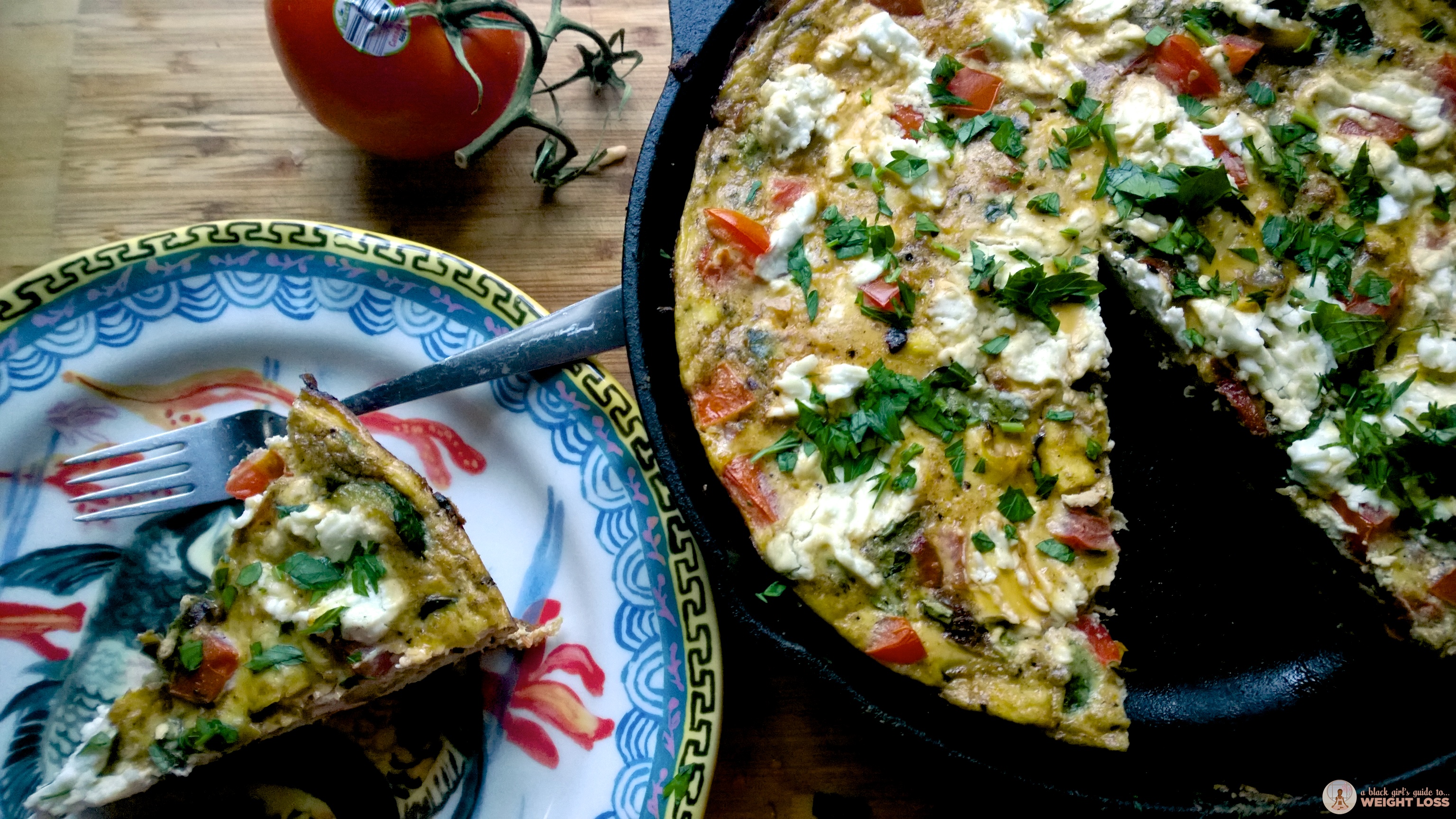
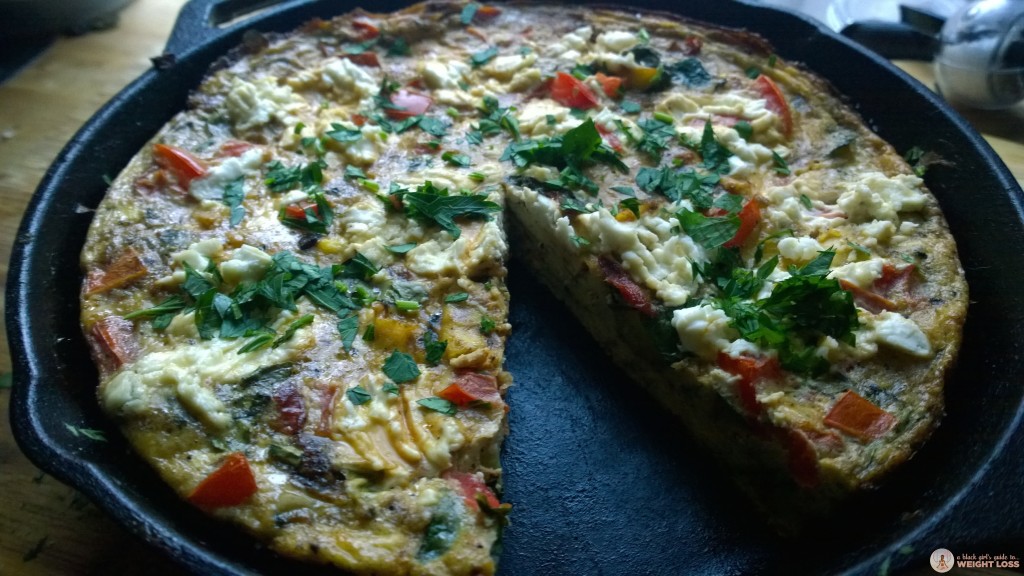
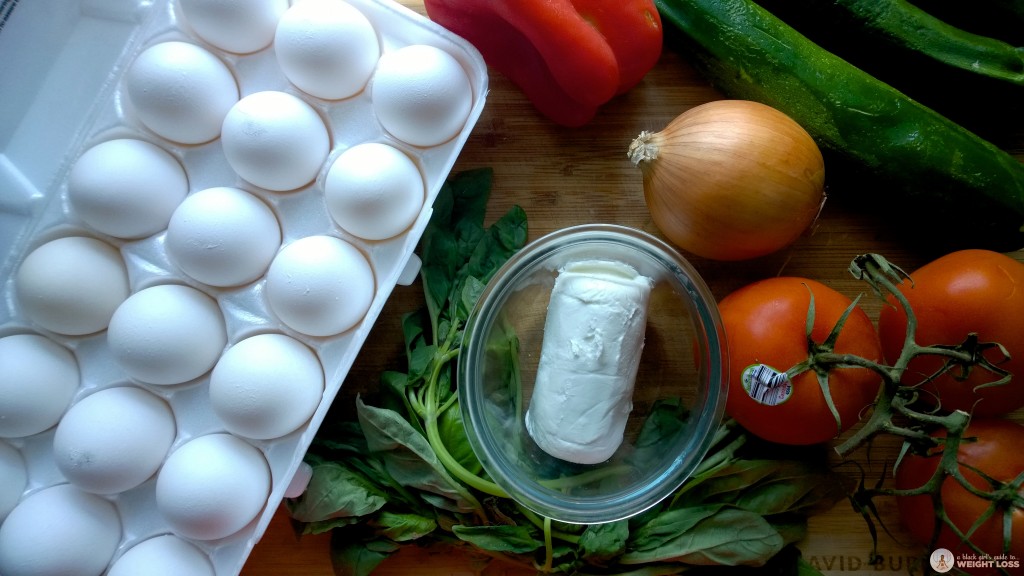
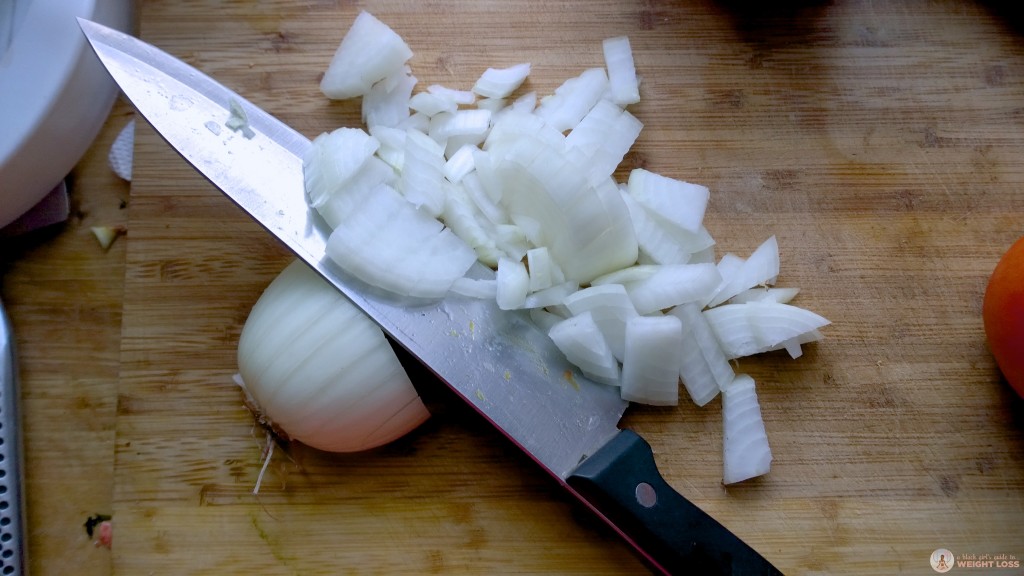
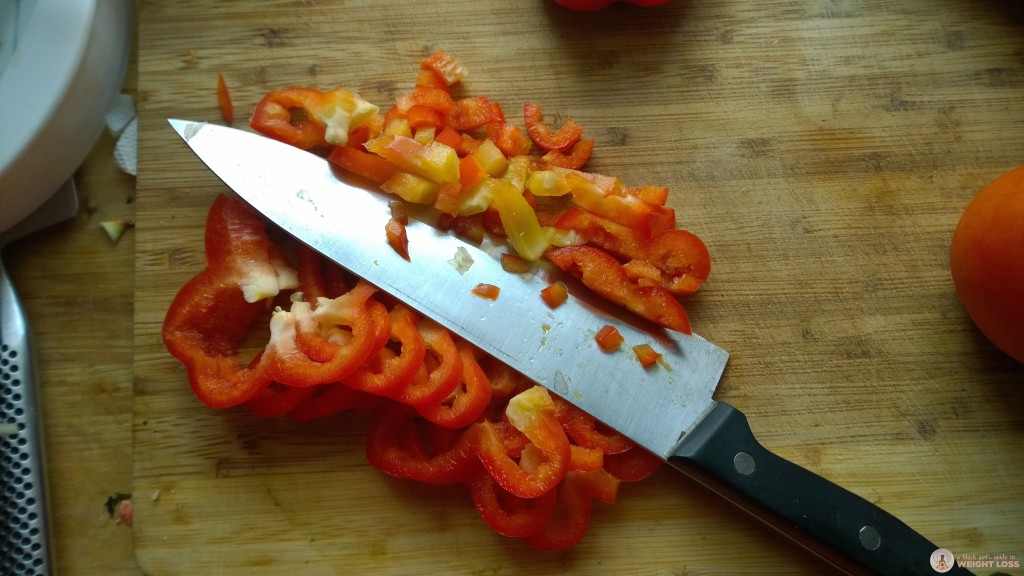
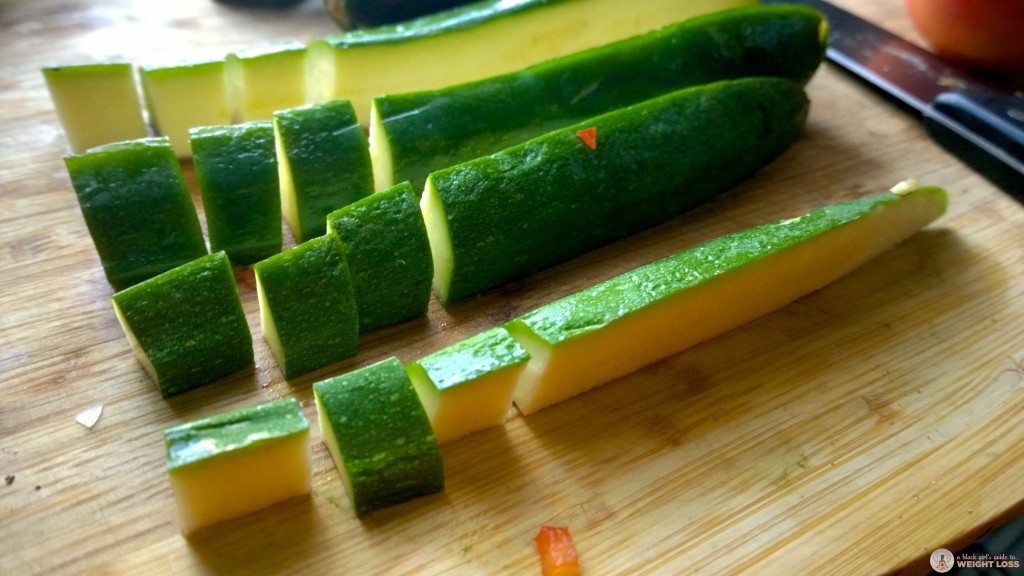
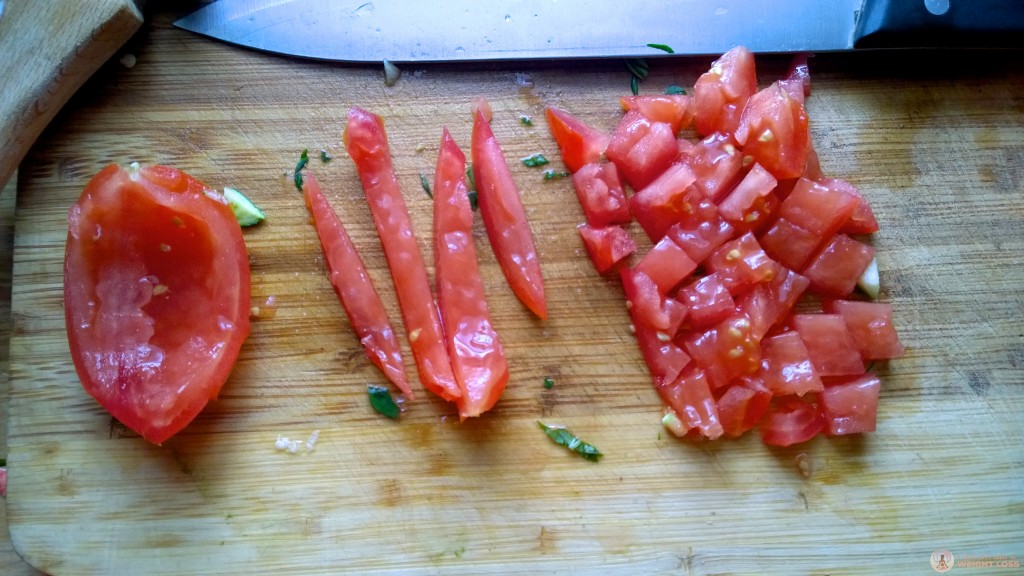
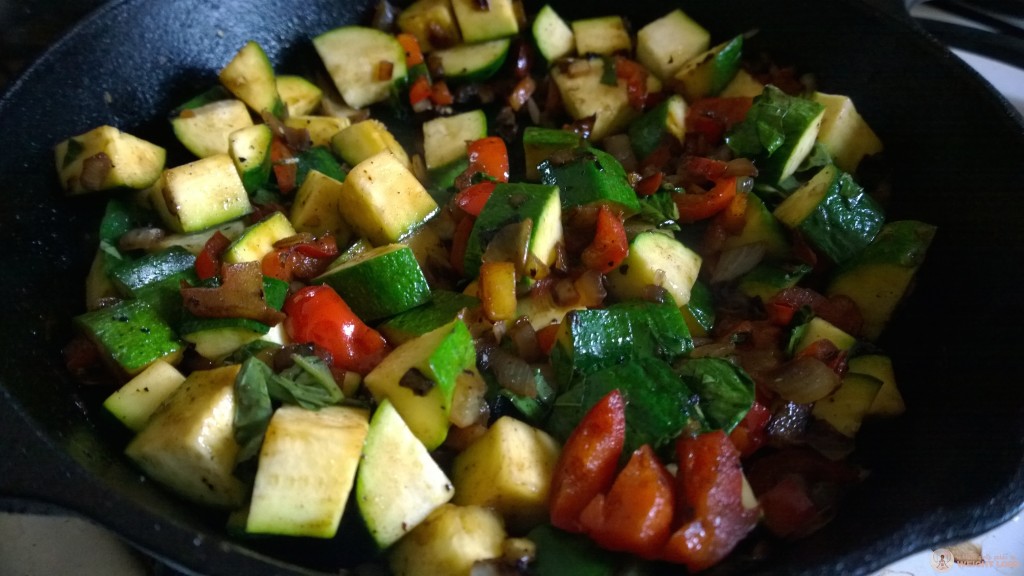
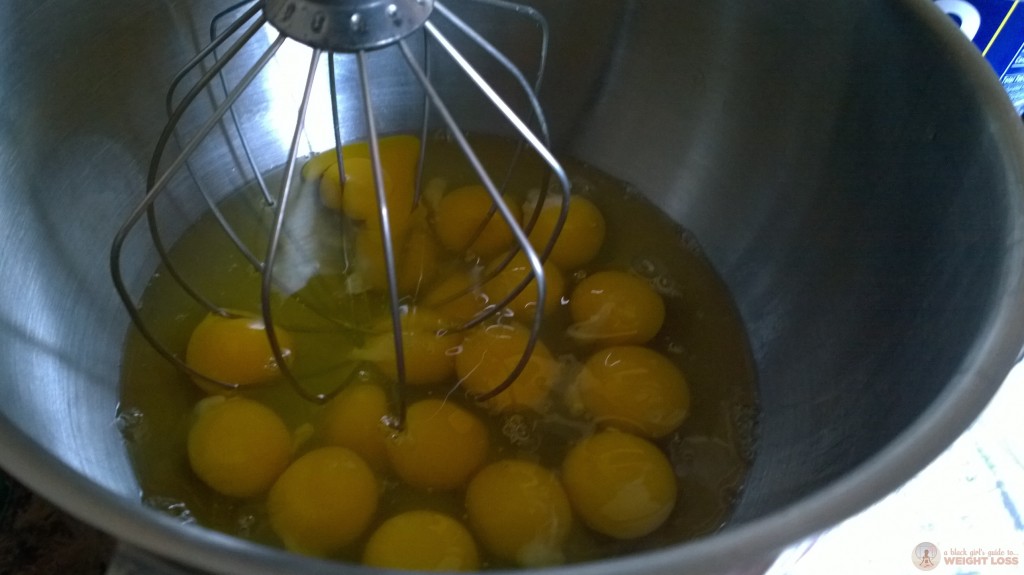
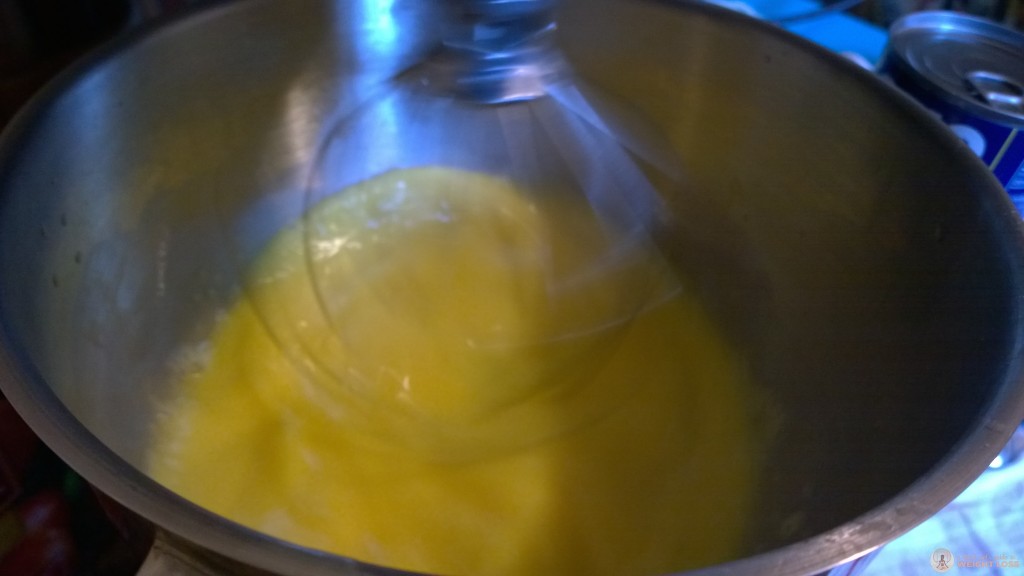
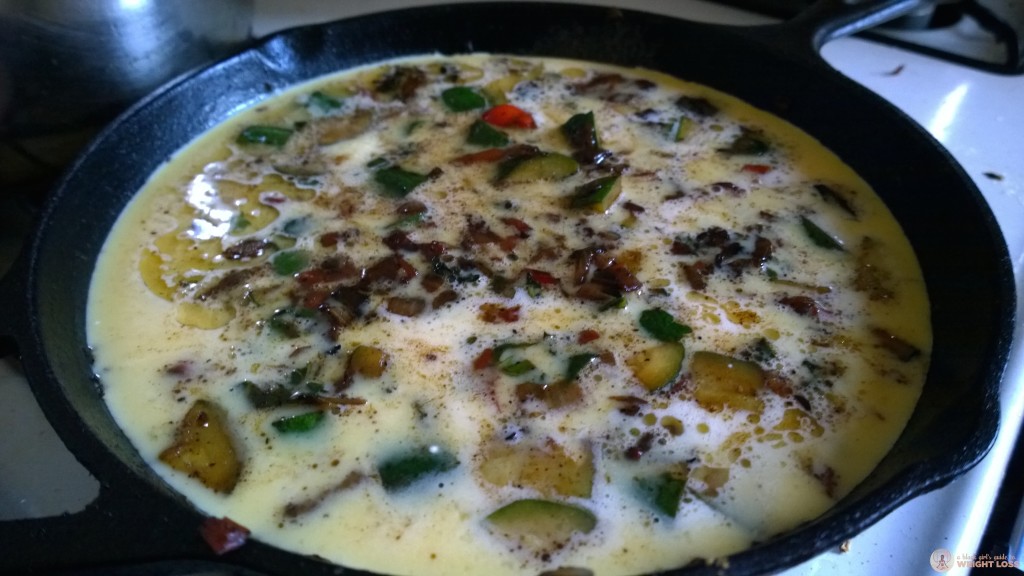
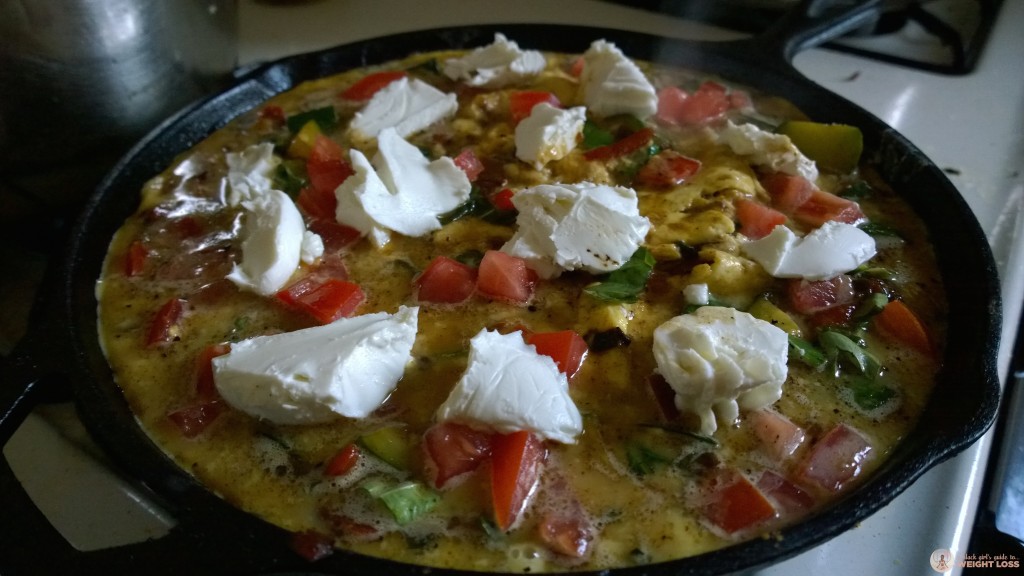
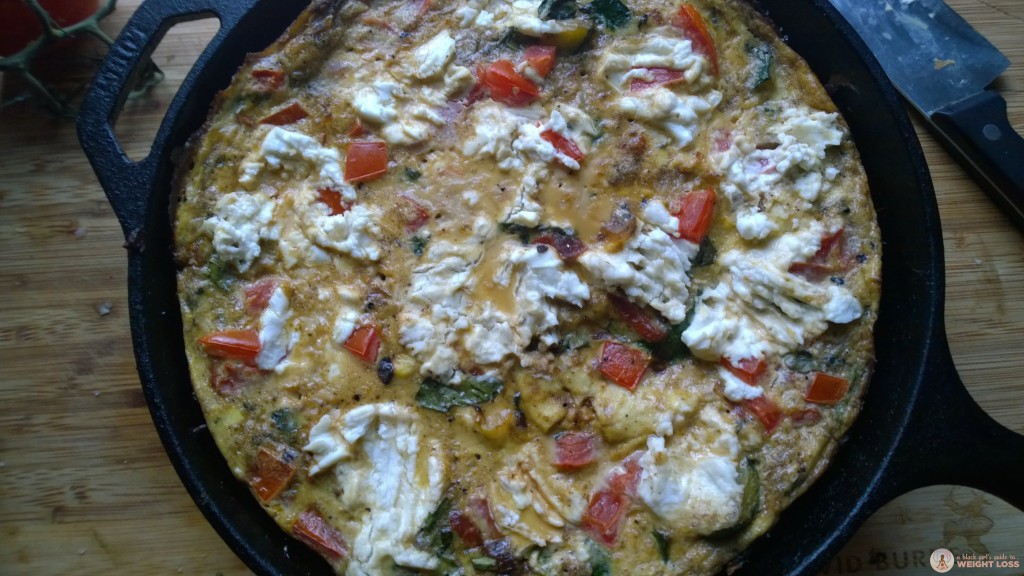
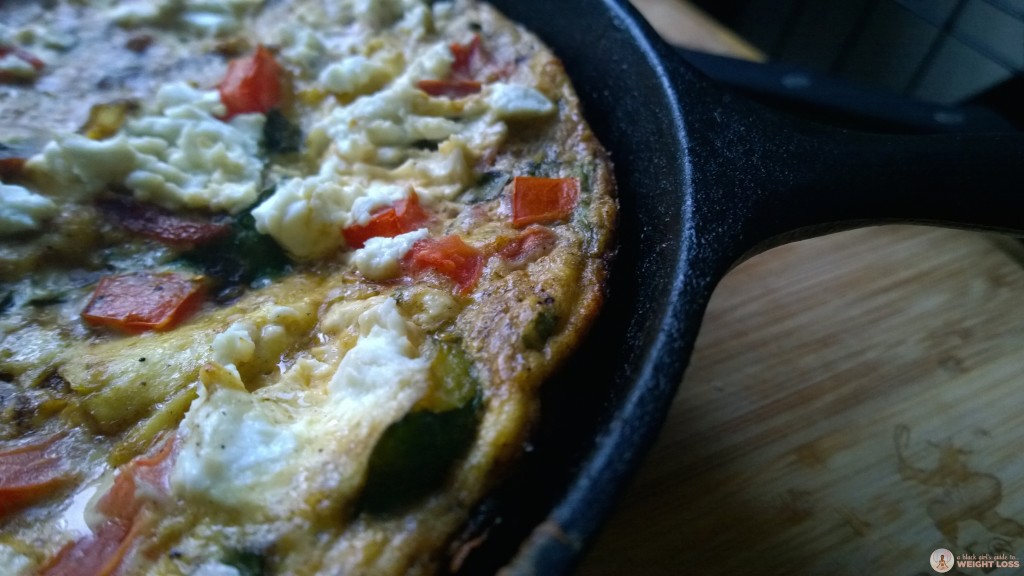
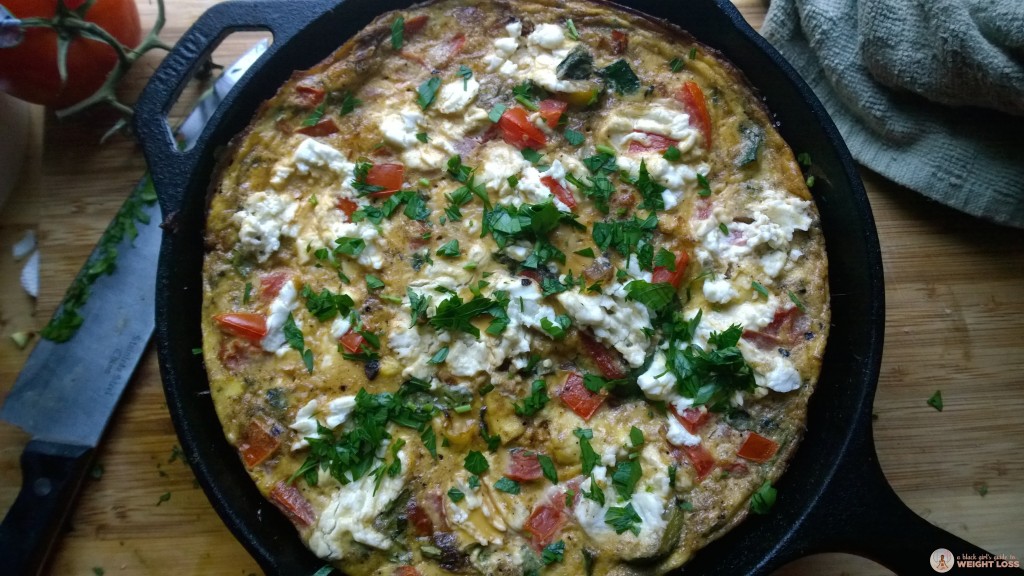
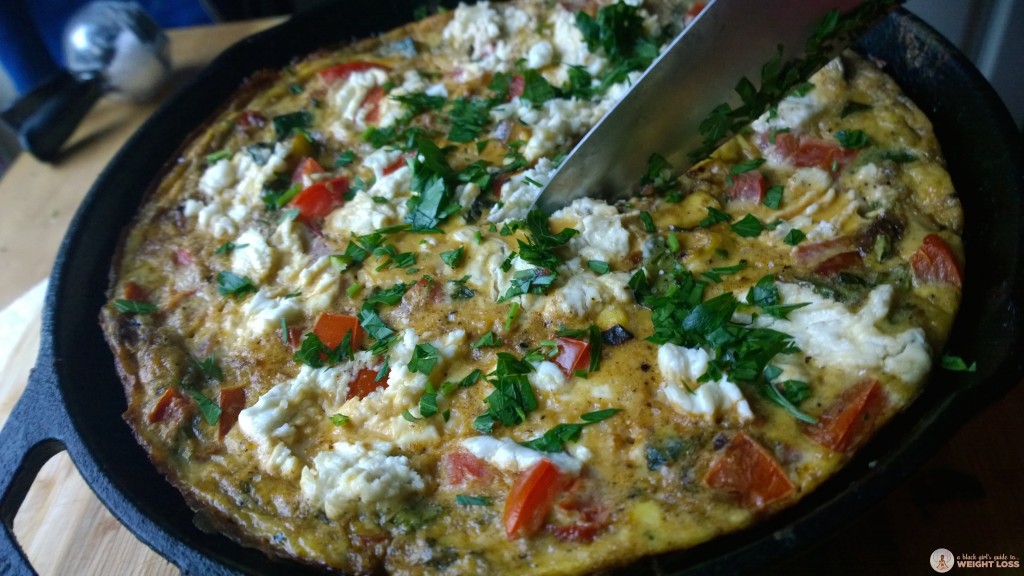

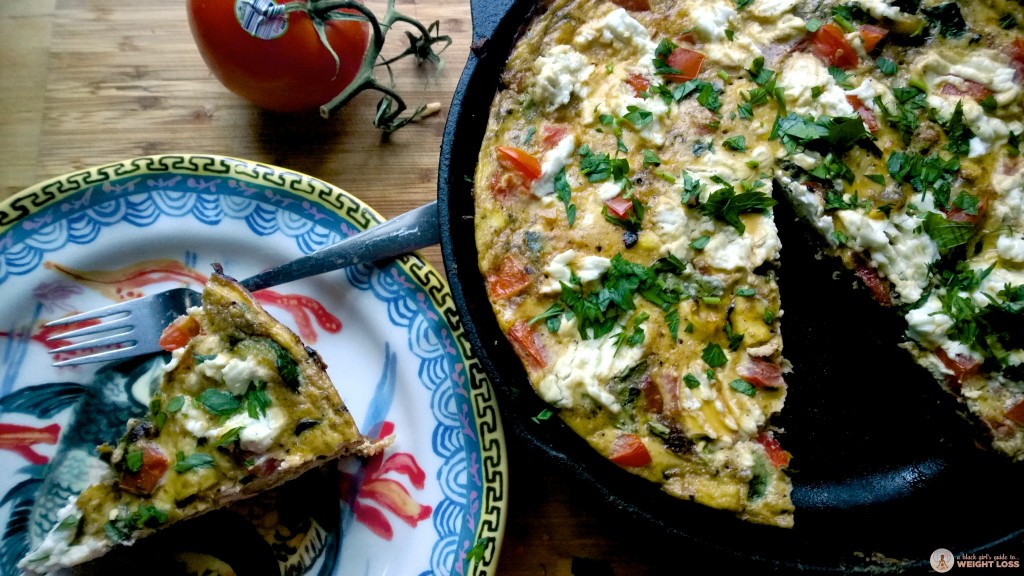
2 comments
I laughed out loud when I read “What Else Can I Do With Those Eggs.” Sometimes I think that if I have to eat one more egg for breakfast… I’ll start clucking! BUT, a frittata with goat cheese sounds delicious, and it gives me hope!
Thanks!
Just sent the recipe to my mom
🙂
Comments are closed.